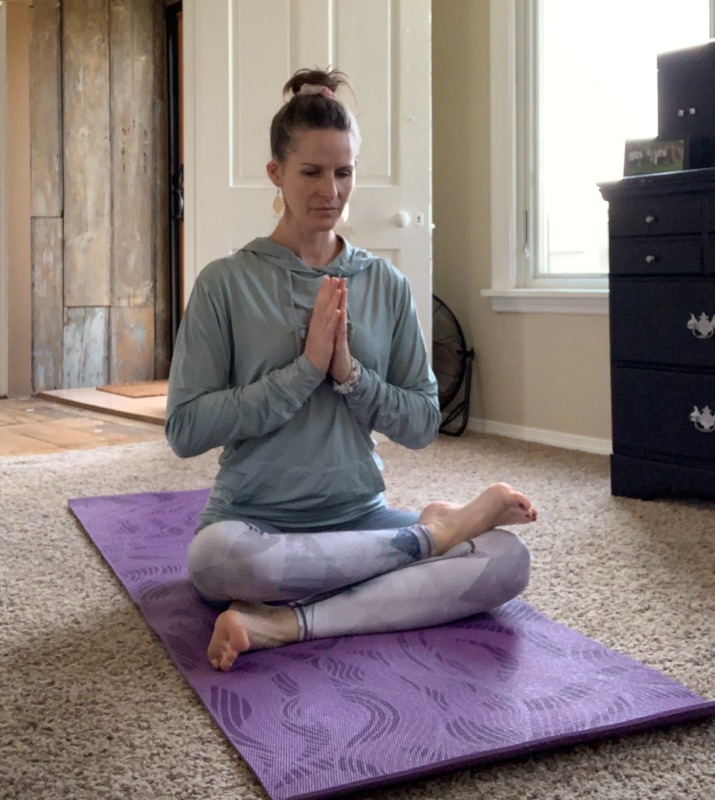Yoga for Mental Health: A Path to Emotional Balance and Inner Peace
Yoga offers powerful tools for nurturing mental and emotional well-being. It’s more than just movement—it’s a practice of presence, awareness, and compassion.
Here are some key mental health benefits of yoga:
1. Managing Emotions with Awareness
Yoga teaches us to sit with what arises—without judgment. Through mindful movement and breath, we begin to notice emotions as they come and go, like waves. We learn not to suppress or fix, but to observe and allow. This gentle witnessing helps reduce emotional reactivity and supports emotional regulation.
2. Acceptance of What Is
On the mat, we practice accepting our bodies, our breath, our limitations—moment by moment. This acceptance naturally extends inward, encouraging us to meet our thoughts and feelings with more compassion and less resistance.
3. Breathing Through Emotions
Breath is a bridge between the body and mind. Pranayama (yogic breathing techniques) helps calm anxiety, soften tension, and ground us during emotional storms. Deep, conscious breathing activates the parasympathetic nervous system, signaling safety to the brain and helping us move through difficult feelings with greater ease.
4. Calming the Nervous System
Yoga soothes the overactive stress response by gently shifting us out of “fight or flight” and into “rest and digest.” Slow flows, restorative poses, and breathwork down-regulate the nervous system, supporting recovery from chronic stress, anxiety, and burnout.
5. Building Resilience and Inner Strength
Through challenging postures and stillness, we cultivate patience, perseverance, and trust. Yoga becomes a safe space to practice grounding in the face of discomfort—skills that translate powerfully off the mat.
In essence, yoga reminds us that emotions are part of being human—but they are not who we are. Through breath, movement, and mindfulness, we return to our center: calm, steady, and whole.

•••
Here’s a gentle Guided Breath Practice to help calm the mind, soothe the nervous system, and create space for emotional clarity and balance. You can do this seated or lying down. Allow 5–10 minutes. Read it through a couple times and then give it a try. Trust the process.
Guided Breath Practice: Grounding & Emotional Balance
1. Find Stillness
Sit or lie down comfortably. Close your eyes or soften your gaze. Let your hands rest gently on your thighs or belly.
Take a moment to notice how you feel—physically, emotionally, mentally. No need to change anything. Just observe.
2. Begin with Natural Breath
Bring your attention to your breath.
Feel the inhale… and the exhale.
Let your breath flow naturally for a few rounds.
3. Lengthen Your Exhale (3 minutes)
Now begin to gently deepen the breath.
Inhale through your nose for a count of 4…
Exhale slowly through your nose or mouth for a count of 6.
Continue:
Inhale 1…2…3…4
Exhale 1…2…3…4…5…6
Let your body soften with each exhale. Imagine tension melting away.
4. Add a Pause (Optional – for emotional clarity)
After a few rounds, add a gentle pause after each inhale and exhale:
Inhale 4 – Hold 2 – Exhale 6 – Hold 2
This creates space between each breath—like creating space between thoughts and emotions.
5. Affirm and Anchor (1–2 minutes)
Silently repeat to yourself on each breath:
Inhale: “I am here.”
Exhale: “I am safe.”
Let the words sink in. Feel your breath as an anchor.
6. Close Gently
Release the count. Return to natural breath.
Notice how you feel now. Lighter? Calmer? Grounded?
When ready, slowly open your eyes.
Namaste, yogis.
🤎
Comments
Post a Comment